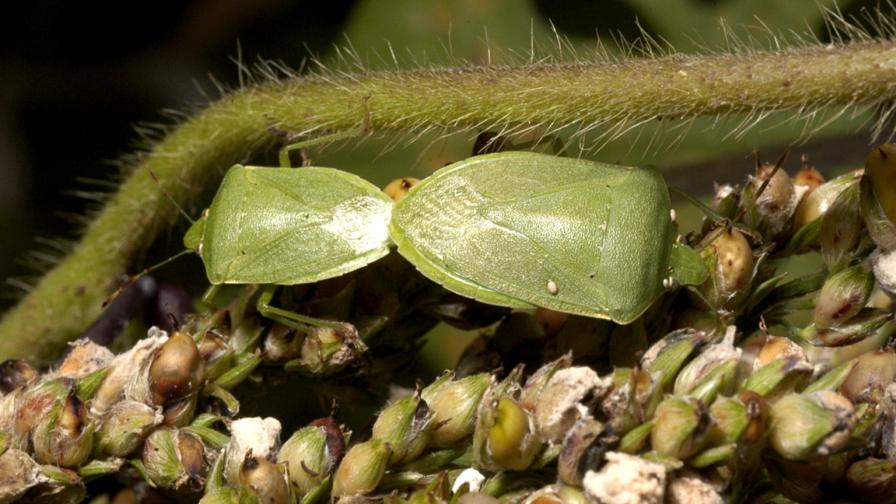Rise of Stink Bugs Still a Concern for Vegetable Growers in Southeast

The southern green stink bug can be a pain for vegetable growers in the Southeast U.S., particularly in tomatoes.
Photo by Herb Pilcher
In recent years, growers in Florida and the Southeast have reported an increase in stink bug-related problems in tomato and other crops.
The southern green stink bug belongs to the order Hemiptera or “true bugs.” Stink bugs can be recognized by their oval shape, five-segmented antennae, and malodorous scent. The southern green stink bug is a highly polyphagous feeder, attacking many important food crops. This species may be confused with the green stinkbug (Nezara hilaris). The green stinkbug ranges farther north than Nezara viridula, and the stink gland pore is short and broad in the southern green stinkbug but long and curved in the green stink bug.
The southern green stink bug has piercing-sucking mouthparts. Salivary fluid is pumped down the salivary duct and liquefied food is pumped up the food canal. The pest attacks all plant parts but prefers growing shoots and developing fruit. Damaged shoots usually wither and may die.
Fruit damage appears as hard brownish or black spots. Feeding punctures affect the edible qualities and lower its market value. Young fruit growth is retarded, and damaged fruit often drops from the plant. In addition to physical damage caused by southern green stinkbug feeding, mechanical transmission of tomato bacterial spot may also result. In tomato and peppers, adults and nymphs use piercing-sucking mouthparts to cause a lightened, and sometimes depressed, blotchy area under the fruit surface.
Survival and Spread
Stink bugs are most prevalent during the periods of October through December and again in March through May. The southern green stink bug completes its life cycle in 65 to 70 days and may produce up to four generations per year in warmer areas.
The eggs are deposited in masses that range from 30 to 130 eggs per mass. The female oviposits on the undersurface of leaves in the upper portions of canopied crops and weeds.
Weed hosts include beggerweed, rattlebox, Mexican clover, blackberry, and nutsedge. The eggs are barrel shaped and white to light-yellow in color. Incubation time for the eggs is five days in the summer and two to three weeks in early spring and late fall.
Feeding begins with the second instar. The second instar has black legs, head, thorax, and antennae. The third and fourth instars increase in size and gradually assume the overall greenish color of adults.
Management Methods
In the past, stink bugs were considered a minor problem. Their increasing numbers may be due to the move to more pest-specific, biorational products and will need to be managed more carefully in the future due to the dramatic drop in the use of more broad-spectrum pyrethroid and organophosphate insecticides.
The Florida Tomato Scouting Guide sets the economic threshold for southern green stink bug in tomato to one stinkbug per six plants. Consult UF/IFAS recommendations for currently labeled insecticides for stink bug control in Florida vegetables.










